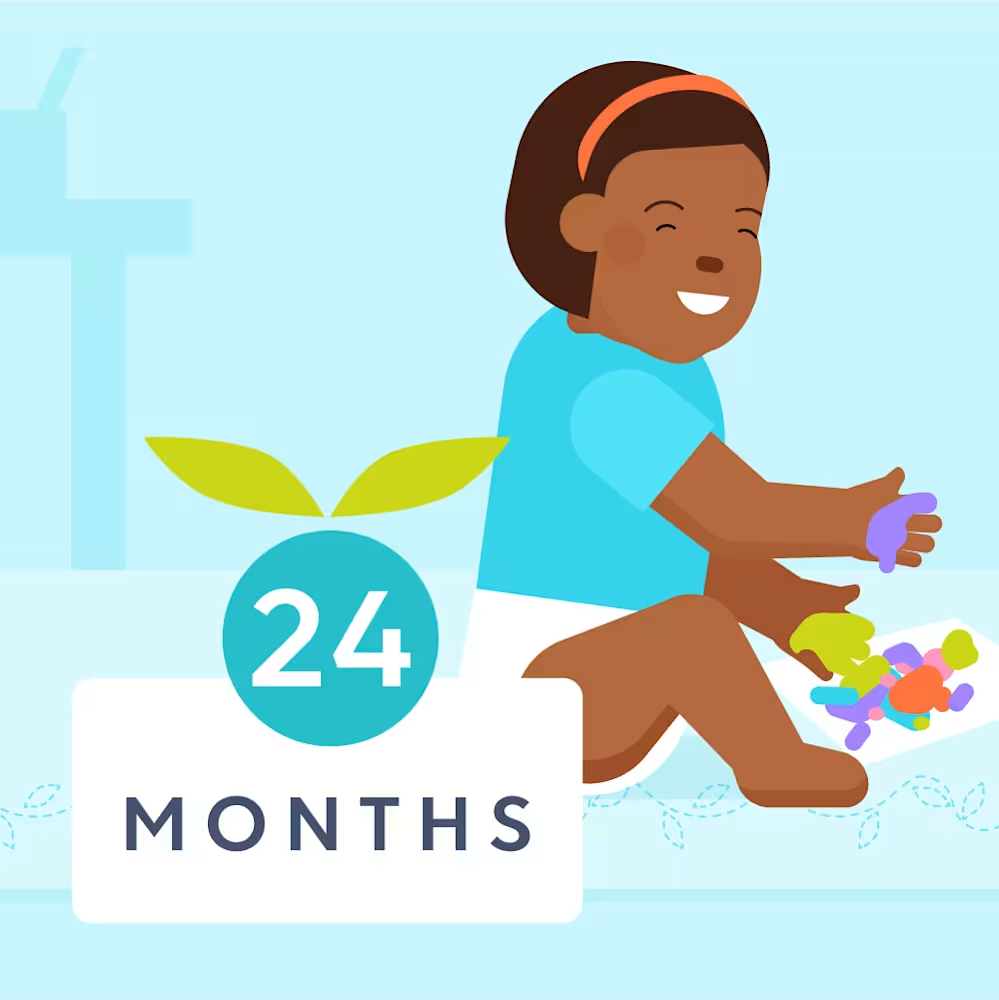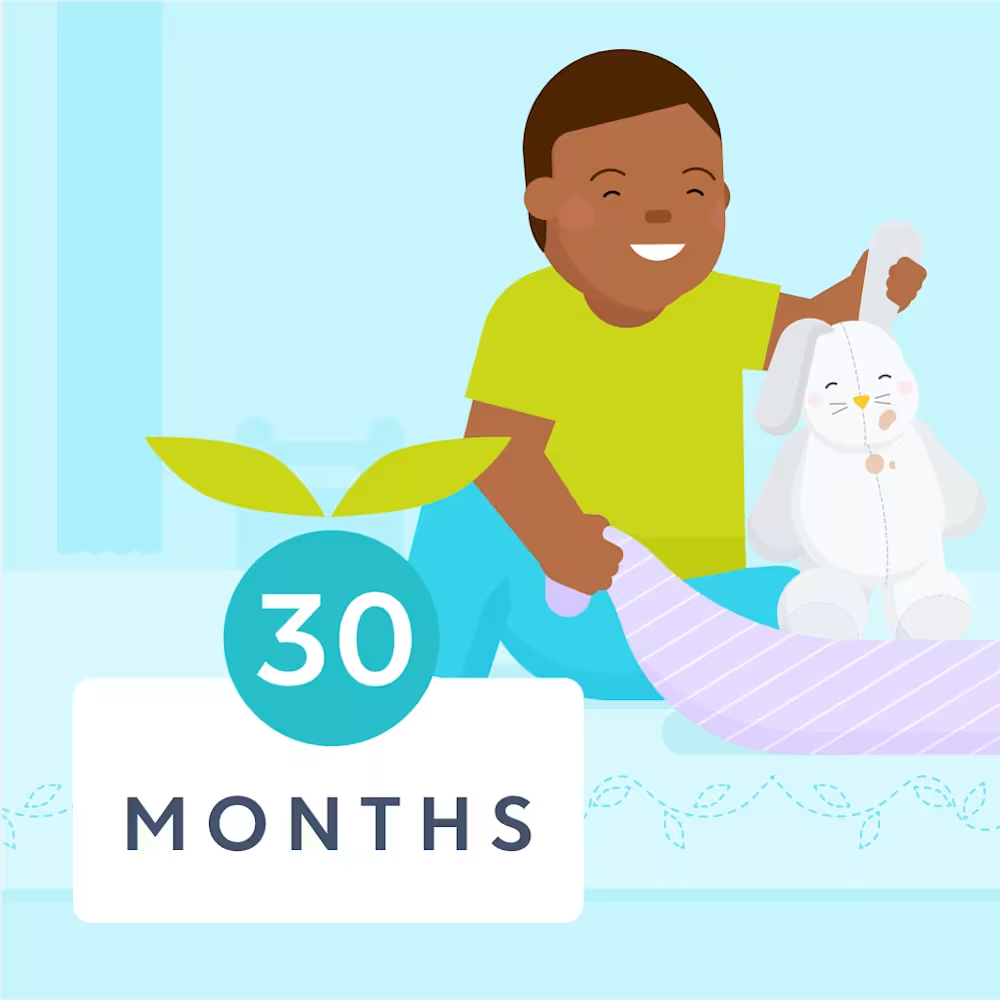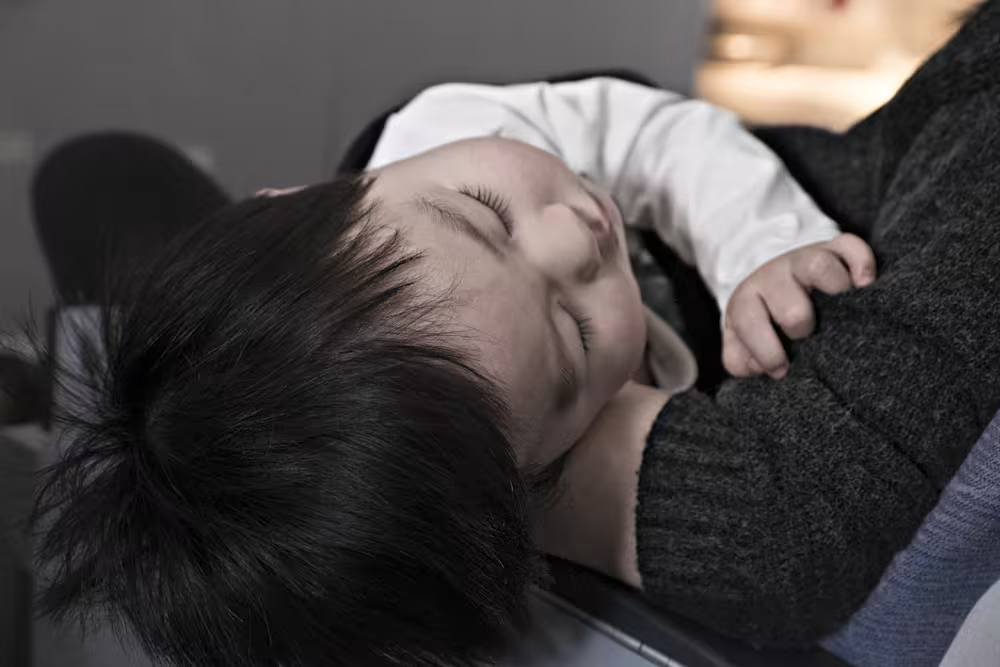Sleep training for 2 year olds: How to, methods and tips
Updated Nov 25, 2025

When it comes to parenting, one of the trickiest decisions can be how to get your little one to sleep. Sleep training is one option and comes with a wide range of approaches and ideas, so it's no wonder parents feel a bit overwhelmed. We won't judge you for the choice you make — but we can give you the facts to make the best decision for your baby's sleep.
Table of Contents
Can you sleep train 2 year olds?
Yes, you can sleep train a 2 year old toddler. While it's more common to associate sleep training with babies, older kids can learn to drift off to dreamland independently too. Sleep training can help with any sleep issues caused by (like when a child can only fall asleep in your arms). Parental help at bedtime often leads to increased calls for help at night too.
While it may sound easy, transitioning from rocking, holding, or feeding your child to sleep to having them doze off solo can be tricky — especially since kids this age are all about asserting their independence and can get anxious when separated from you. If you decide to try sleep training, there are a variety of techniques to look into. Fast or slow, you can find a method that works best for you and your little one. Ultimately, it's up to you to decide if sleep training is a good fit for your family.
How many nights does it take to sleep train 2 year olds?
It may take a few days or a few weeks to see results when sleep training a 2 year old. The time frame depends on the type of sleep training you choose, your objectives, and your child's temperament.
Generally speaking, you should start noticing a bit of progress after 3 - 4 nights if you use a gradual or total extinction technique. Gentle methods, on the other hand, may take a bit more time. Remember that consistency is key if you're going down the sleep training route.
Sleep training methods for 2 year olds
| Sleep training method | Does it work for children 2 years and older? |
|---|---|
| Gentle methods | Yes, but these techniques may take more time. |
| Chair method | Yes, this method can help parents gradually move out of the room as their child drifts off to sleep. However, it's normal for parents to feel "stuck" in the doorway and find it difficult to take the next step. |
| Ferber method or gradual extinction | Yes, although these techniques may be quicker, they may lead to more upsetness in the short-term. Older toddlers may also be more likely to sneak out of their crib or wander out of their room. |
| Cry it out or total extinction | Yes, this method can be beneficial for children who become more distressed with frequent check-ins. However, we recommend using a video monitor and doing hourly safety checks. Older children may also be more prone to slipping out of their crib or leaving their room. |
We get asked a lot about which method is best for older toddlers and preschoolers. Each approach has its advantages and disadvantages, so it's all about finding the one that works best for your family. Here's a quick look at some of the most popular sleep training techniques.
Gentle method
This approach emphasizes gradual changes. It’s often preferred by parents who want to minimize tears and don't mind if it takes a bit longer to see progress. The fading technique is one example of a gentle sleep training method.
It works like this: If your little one usually dozes off with a bit of patting, you can start by gradually lessening the patting, until you completely take it away. You'd stay in the room to offer support and keep your hand on your child to help them drift off if needed. Eventually, you'd step out of the room before they fall asleep.
Chair method
The chair method is a gentle sleep training method that can work well for toddlers. You will sit in a chair next to your child’s and gradually move the chair further away each night until you are at the door. At first, you will remain in the room with your kiddo until they fall asleep.
The goal is to move the chair from beside the crib to just outside the door and eventually, you won't need to be in the room for your toddler to drift off. This method can be a gentle way to help your toddler learn to sleep on their own. However, it's common for toddlers to take longer to fall asleep if you stay in the room, as they may be distracted by your presence.
Ferber method
The popular is a “check and console” strategy that is often preferred by caregivers who want quicker results and are okay with allowing their toddlers to cry for defined periods of time until they fall asleep. Instead of slowly changing your toddler's sleep habits, this technique involves a more direct approach: you start by putting your toddler down awake in their sleep space after their bedtime routine and leaving the room.
When using graduated extinction sleep training methods like the Ferber method, you'll come back in at regular intervals to offer a hug or some comforting words before leaving again. You're basically saying "I'm here for you, but it's time to drift off to dreamland now!"
As you progress, you gradually increase the time between check-ins until your toddler falls asleep.
It's normal and understandable for your toddler to cry when you leave the room, since this may not be what they're used to. can also cause toddlers to have difficulty falling asleep on their own at night. Since this method can cause a lot of upsetness in the short term, it's not uncommon for children to try to climb out of their crib or leave their bedroom if they're in a bed.
Cry it out
The of sleep training focuses on leaving a child to fall asleep on their own, without any attempts to comfort them. It often involves more crying than other methods in the short term. However, it may be a good fit and lead to fewer tears overall if check-ins to soothe the toddler are more upsetting.
This is how it works: After a , the toddler would be put in their sleep area while still awake. Parents would then leave the room and not return to comfort them while they try to fall asleep.
Before beginning, ensure your kiddo is fed, dry, not in physical discomfort, and has the developmental capability to self-soothe. A video monitor with hourly check-ins is recommended for extra safety. Note that it’s not uncommon for toddlers this age to climb out of their cribs, so you’ll want to ensure that the room is fully child proofed.
Sleep training tips for 2 year olds
Tip | Why it helps | What to try |
|---|---|---|
Make sure bedtime isn’t too early | Toddlers who go to bed before they’re truly tired often resist sleep or stall endlessly. | Most 2 year olds need 5.5 - 6 hours of awake time between nap and bedtime. If bedtime battles are common, try shifting bedtime later by 15 - 30 minutes. |
Treat the room like one big crib | Early bed transitions can lead to middle-of-the-night wanderings or unsafe exploring. | Childproof the bedroom and consider using a “door monkey” or baby gate to keep your toddler safely contained. Balance safety with the need for a clear exit in case of emergencies. |
Use a toddler clock | Visual cues help toddlers understand sleep and wake times, giving them more independence. | Choose a clock with clear colors or icons (like red for sleep, green for wake). Explain the rules and reward success with a sticker chart or small prize for staying in bed until “green.” |
Find more details below:
Tip #1: Make sure bedtime isn’t too early
Kids this age often need 5.5 - 6 hours of awake time between their nap and bedtime in order to feel tired enough to sleep. If your little one is “under tired” they’re at bedtime, which can make independent sleep extra challenging. Consider adjusting your child’s schedule if needed.
Tip #2: Treat the room like one big crib
It’s pretty much a given: Toddlers who have on the early side are unlikely to have the impulse control to stay in their bedroom all night. Make sure to childproof the bedroom and consider using a “door monkey” or gate to ensure your child stays safely in their room. Note that you’ll need to balance the potential fire safety risks of leaving the door open against the risks of having your child wander unattended.
Tip #3: Use a toddler clock
A toddler clock can provide a visual aid to let a child know when it is still time and when it is okay to get up. When they wake up to a red light (or moon, for example, as different clocks have different indicators), they will know that it's still time to sleep and they should go back to bed. But if they wake up to a green light, they'll know that it's morning and they can get up.
Set the awake time and explain to your toddler that if they wake up to the red light, they need to stay in bed. Then, to reward them for following the rules, use a sticker chart or offer small prizes after a night of successful sleep training.
Can you sleep train 2 year olds for naps?
Maybe. Children in this age group may struggle to accept a new way of falling asleep during the day. As a result, it’s common to see older toddlers and preschoolers skip naps entirely and transition to a zero-nap schedule too early. Younger 2 year olds and those with some independent sleeping skills already in place may see more success during the day.
Can you sleep train during the 2 year sleep regression?
Yes, you can sleep train even if your 2 year old’s sleeping patterns have regressed. Depending on the , it might be more challenging to master independent sleeping skills.
How to sleep train 2 year olds twins?
Some families of twins find it helpful to separate the twins at the start of sleep training so that one child doesn’t wake the other. Once they start to make progress, they can be reunited. Either way, many twins learn to sleep through the noises of their sibling.
In two-parent homes, it might be beneficial for each parent to take care of their designated twin throughout the night, and attend to them during their night wakings (whether they sleep in the same room or not). If this isn't an option, you can work on one twin's night-wakings for a week, and then move on to the other twin the next week. We usually suggest starting with the "easier" twin first, so you can make progress quickly and have more energy to work on the more challenging twin.
What to do if sleep training for 2 year olds not working
Sleep training is the process of helping toddlers learn new habits and skills to get better sleep. Don't be disheartened if you don't see results immediately. Here are some tips to consider:
Ensure your toddler is falling asleep without assistance every night – if they receive help sleeping some nights, but not others, this can lead to confusion and impede progress.
Mistiming bedtime can make sleep training more challenging. Make sure to follow an .
Put your toddler in bed when they are still somewhat awake (not overly sleepy).
Consult your pediatrician to make sure there are no medical issues.
Think about getting a customized sleep plan through .
Takeaway: Sleep training 2 year old toddlers
No quick fixes: Toddler sleep challenges take time — progress happens with consistency, not overnight.
Your approach matters: The right method depends on your child’s temperament, your parenting style, and what feels sustainable for your family.
Expect some pushback: It’s normal for toddlers to resist change, especially if they’re used to falling asleep with help.
Stay calm and consistent: Clear boundaries and gentle reassurance help your toddler build new, independent sleep habits.
Sleep training 2 year olds FAQ
If you're curious about what lies ahead with sleep training, glimpse into the future to see what you might experience with sleep training for . Also take a look back at to see how far you've come.
Share article:
Note: The content on this site is for informational purposes only and should not replace medical advice from your doctor, pediatrician, or medical professional. If you have questions or concerns, you should contact a medical professional.
1 Sources
Table of Contents
Share article:





